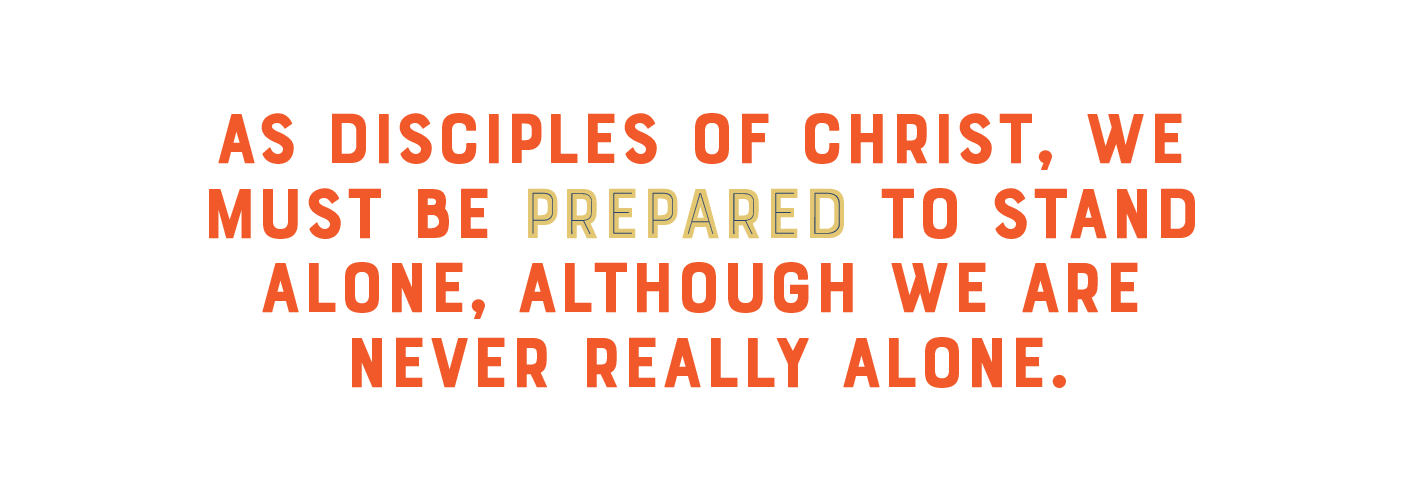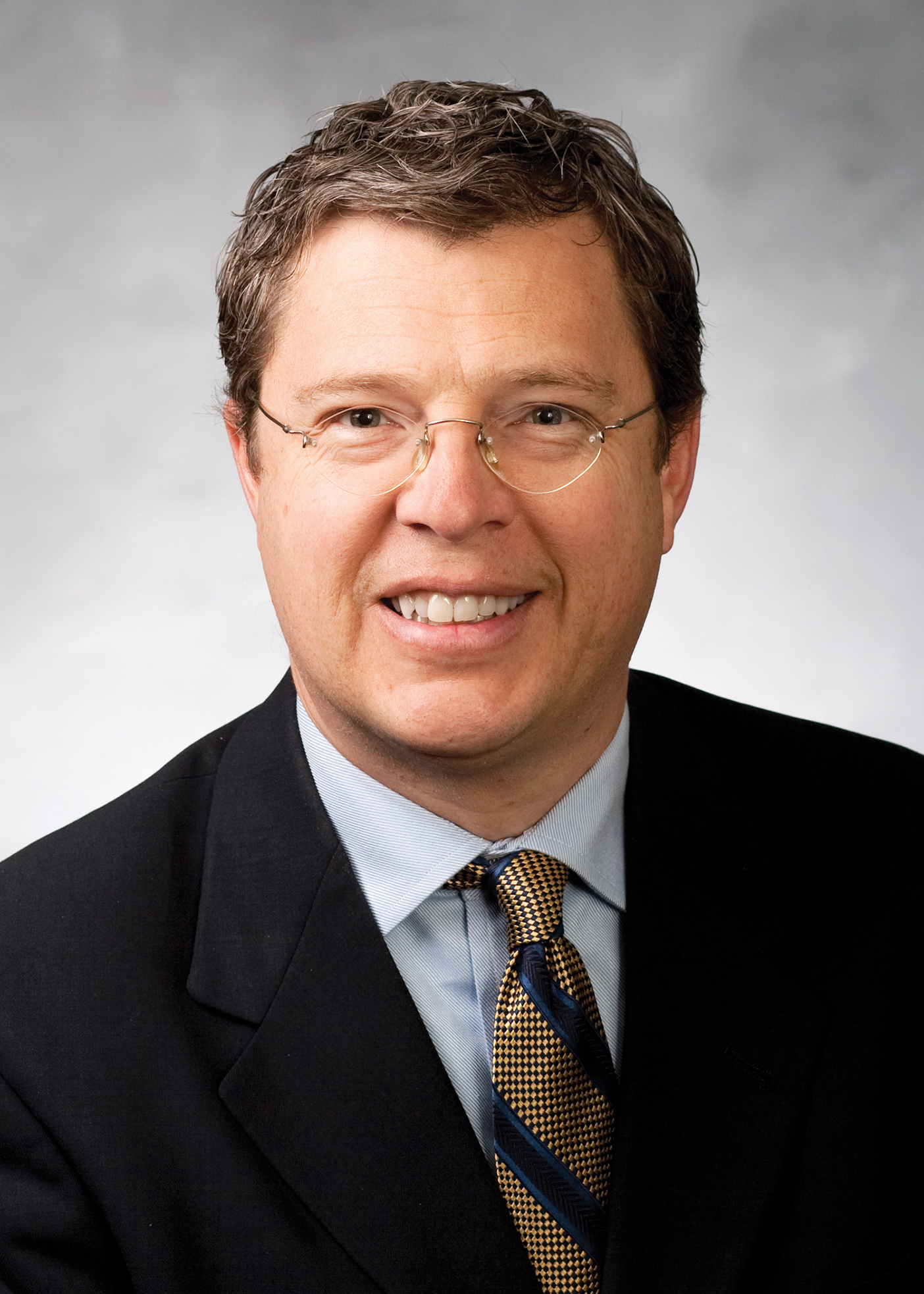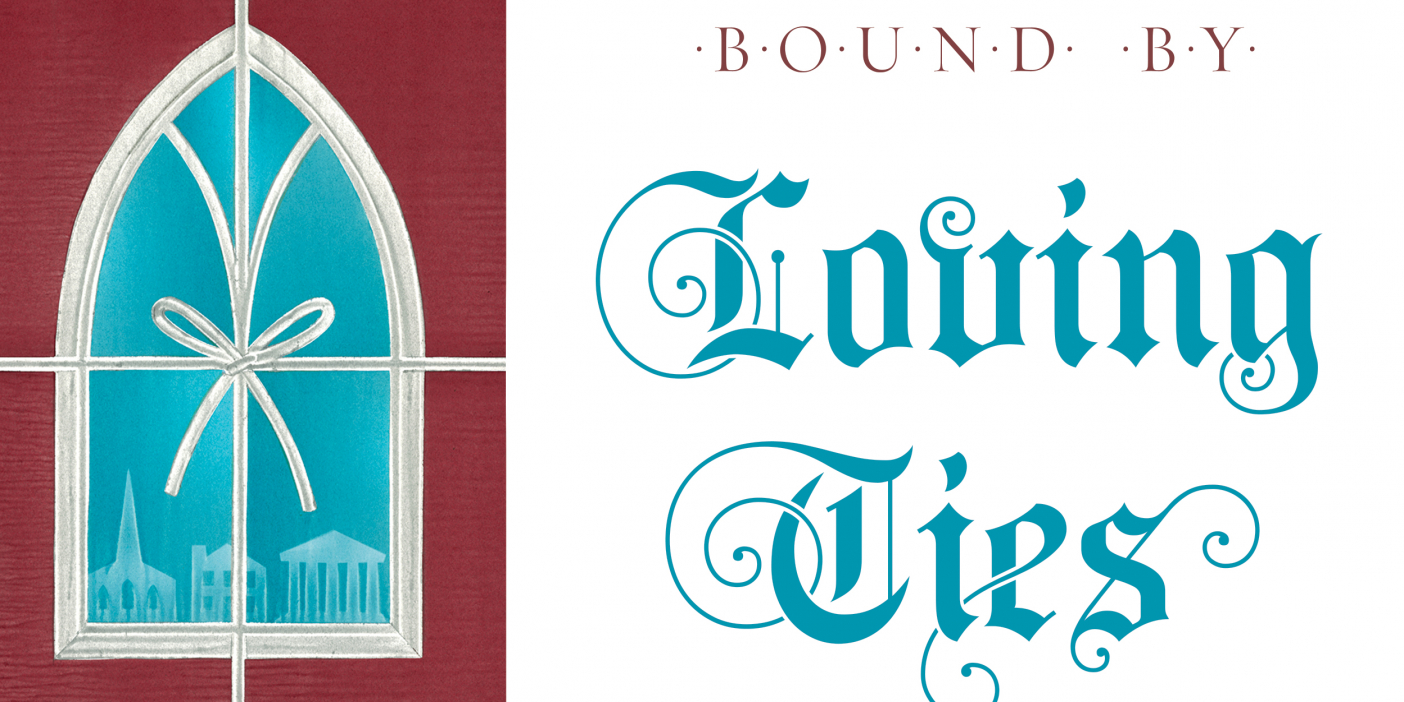Audacious Faith

Appreciating the unique power and singular appeal of LDS doctrine.
By Brett G. Scharffs in the Summer 2017 Issue
Illustrations by Federico Gastaldi
In my role as director of BYU’s International Center for Law and Religion Studies, I interact on an almost daily basis with people from around the world of almost every imaginable religious background—and with many who are not religious at all. Occasionally, I am asked to explain something about what Mormons believe. Usually someone will want to know what is unique and distinctive about the Church or how it fits with other Christian denominations.
Opportunities like these give me a chance to talk about not only similarities between The Church of Jesus Christ of Latter-day Saints and other faiths but also some of the things that make us different.
I was taught as a boy to take pride in the things that make us different. We were taught that Mormons are and should be “a peculiar people” (Deut. 14:12) and that we were to be in the world but not of it (John 17:15–16, 18).
But in the second half of my life, which coincides with the entire life of most in this room, it seems to me that we as a church have become better at explaining and are more inclined to emphasize our similarities with other Christian churches. This is an understandable part of an effort of the Church and its people to be viewed as less odd and more like others. As recently as Mitt Romney’s (BA ’71) presidential campaigns, the Church and its members were still expected to address the tired old question of whether Mormons are Christians.
We have sometimes found ourselves in exasperation repeating the name of the Church: The Church of Jesus Christ of Latter-day Saints. The Church has even changed its logo to emphasize the centrality of Jesus Christ. I, for one, welcome this renewed emphasis on Jesus Christ and His Atonement.
But it is also true that some of our understandings of even basic doctrines are quite distinctive—even audacious, which the Oxford English Dictionary defines as “daring, bold, confident, intrepid.”
Peculiar Doctrines
I learned this as a freshman at Georgetown University. I had a dorm roommate named Tom Warner, a good Catholic boy from Queens, New York. He and I became fast friends, and soon I felt that perhaps it was no accident that we had found ourselves as roommates.
One night while we were lying on our cots, I asked him, “Tom, do you think we knew each other in the premortal existence?”
His bedside light snapped on, and he looked at me incredulously: “What’s that?”
I answered casually, “You know, the pre-earth life, where we lived as spirit children of our Heavenly Father.”
Now he was looking at me as if I were a member of a strange religious cult, as others on our dormitory floor had already warned him.
“There is no such thing as a premortal existence,” he said, “and if there is, I wasn’t there.” His life, he explained, began at conception. Then the light snapped off.
I was stunned. I thought of myself as a reasonably sophisticated and well-educated person, but I had no idea how unique and unusual the doctrine of the premortal existence is. I had thought it was a shared part of Christian heritage. Although there is scriptural and other evidence that many early Christians once embraced this doctrine,1 it is not a part of orthodox Christian or Protestant theology.

If you think about it, it is an audacious claim that we as human beings are coeternal with God (D&C 93:29), that we existed with Him through the eternities, and that this earth life is but the middle act in a three-act play,2 with premortal and postmortal life bookending and giving meaning to mortal life.
Consider another very basic Mormon doctrine: the nature of the Godhead. A few years ago at the BYU Law School, we were hosting a conference on religious iconography. An Orthodox Christian priest from Oxford University had been invited to participate. He explained that as part of his preparation for coming to Provo, he had decided to do some homework about what Mormons believe. He didn’t want a dry academic account, so he called the Mormon missionaries and invited them over. He described the visit:
They began to tell me about how Joseph Smith as a teenager was visited by God the Father and Jesus Christ. Then they showed me a truly remarkable piece of religious iconography. It was a picture of God and Jesus, depicted as two men in white robes and with white hair, standing in the air, with Joseph on the ground leaning back in astonishment.
He projected the illustration onto the screen.
“What a remarkable piece of religious iconography,” he said, “depicting God and Jesus Christ as two men with bodies.” This, he explained, was a complete recalculation of the Christian doctrine of the Trinity.
I have to admit I had never thought of this illustration as noteworthy religious iconography. But think about it: it depicts, in an illustration a child can understand, something profound about the nature of God and Jesus Christ.
God is not a distant, abstract being without body, parts, or passions; He is a perfect and exalted and embodied man. The implications of this doctrine are rather stunning. When Mormons quote from Genesis that man is created “in the image of God,” that we are His children, it is not a metaphor; it is an audacious claim about the nature of God and the nature of man (Gen. 1:27).
Joseph Smith often taught that the most important thing for us to understand is the true nature of God. Only then, he taught, can we understand the true nature of man.
In the King Follett Sermon, recorded in April 1844, only a few months before he died, Joseph said:
God himself was once as we are now, and is an exalted man, and sits enthroned in yonder heavens! . . .
These are incomprehensible ideas to some, but they are simple. It is the first principle of the gospel to know for a certainty the character of God, and to know that we may converse with Him as one man converses with another.3
This view of God is so audacious that it is dismissed as blasphemous by some and as unbelievable by others. But it is one of the most simple, elegant, and brilliant truths of the restored gospel. God is our Father, and His work and His glory are to bring us home to Him (see Moses 1:39).
Mormon doctrine also propounds one of the most optimistic and progressive understandings of what it means to be human. In Joseph Smith’s understanding, not only is God more like us, but we are more like God and are oriented to become even more like God than in many other Christian understandings. For Mormons it is more than metaphor when Christ appealed in His Intercessory Prayer “that they all may be one; as thou, Father, art in me, and I in thee, that they also may be one in us” (John 17:21).
For those, like me, who may be inclined toward melancholy, the restored gospel’s account of who we are as human beings and who we may become is a powerful antidote to pessimism or discouragement. It is audacious to believe that God uses the simple things of the world (us) to confound the wise. It is audacious to believe that God loves broken things (including us and, in particular, our hearts) and that it is from the crooked timber of humanity (again us) that God accomplishes His ends. It is audacious to believe that God will make weak things strong (Ether 12:27). It is audacious to believe that we are His children.
Joseph was ridiculed for his doctrine that human beings are coeternal with God and have the capacity and destiny to become beings like unto Him. Some critics have ridiculed Mormons as “god makers.” But Jesus Himself was a god maker: He urged His disciples to be one, as He and His Father are one (see 3 Ne. 28:10 and D&C 35:2), and to become perfect (meaning complete) as He and His Father are perfect (see Matt. 5:48 and 3 Ne. 12:48); and He taught that we are “joint-heirs with Christ” of the kingdom of God (Rom. 8:17). Joseph had the audacity and vision to understand that these promises are not metaphors but are to be taken literally.

Restoring Christianity
When I am asked how Mormons fit in with other Christians, I usually emphasize the idea of restoration. I explain that we believe that the doctrines of the church Christ established were changed and the priesthood authority was lost. When Joseph Smith received priesthood authority from John the Baptist and Peter, James, and John, it was a restoration of the priesthood authority that had been lost. Today the Church is led by apostles and prophets, just as it was when Jesus set up His Church. To be sure, these are audacious claims.
The Prophet Joseph understood that what he claimed to have experienced was almost unbelievable. Near the end of his life, he said, “I don’t blame any one for not believing my history. If I had not experienced what I have, I would not have believed it myself.”4 But Joseph had no choice but to believe. As he put it, “For I had seen a vision; I knew it, and I knew that God knew it, and I could not deny it, neither dared I do it” (JS–H 1:25).
Let us recognize the audacity of Joseph’s claims and the confidence with which he made them. In the Wentworth Letter, in which Joseph was asked to provide a sketch of the basic history and beliefs of the Church, Joseph wrote, in addition to the Articles of Faith, what has come to be known as the Standard of Truth. Consider the audacity of his words, keeping in mind that this was written in 1842, two years before his death at a time when the Church probably had fewer than 25,000 members:
The standard of truth has been erected: no unhallowed hand can stop the work from progressing, persecutions may rage, mobs may combine, armies may assemble, calumny may defame, but the truth of God will go forth boldly, nobly, and independent till it has penetrated every continent, visited every clime, swept every country, and sounded in every ear, till the purposes of God shall be accomplished and the great Jehovah shall say the work is done.5
I also sometimes emphasize that Mormons are noncreedal Christians. The most influential creeds during Joseph’s lifetime included the Westminster Confession of Faith, which declared that God “is infinite in being and perfection, a most pure spirit, invisible, without body, parts, or passions.”6 From the First Vision, Joseph knew this to be mistaken. He thought creeds were too limiting of our search and recognition of truth. Indeed, in his expansive imagination, he asserted that the Church embraced all truth, from whatever source. As Joseph Smith put it:
Mormonism is truth; and every man who embraced it felt himself at liberty to embrace every truth: consequently the shackles of superstition, bigotry, ignorance, and priestcraft, falls at once from his neck; and his eyes are opened to see the truth.7
This is truly audacious. The heavens were opened to Joseph, and he received visions and the gift of translation. Yet he studied German so that he could read Martin Luther’s translation of the Bible, Hebrew so that he could better comprehend the Old Testament, and Egyptian because it was related to the language of the Nephites. Virtually everywhere he settled during his ministry, the Prophet Joseph built or planned to build a temple, and next to it he built or planned to build a university.
On another occasion Joseph said, “The first and fundamental principle of our holy religion is” to be free “to embrace all, and every item of truth, without limitation or without being circumscribed or prohibited by the creeds or superstitious notions of men, or by the dominations of one another.”8
The Price of Mortality
Mormon doctrine provides a unique perspective on the purpose of mortality, human suffering, and what is sometimes called “the problem of evil” by theologians: How is it that an all-powerful and all-loving God can permit so much evil and suffering in the world?
When my wife, Deirdre, and I lived in Washington, D.C., where I clerked for a judge on the D.C. Circuit Court of Appeals, my calling in our ward was Cub Scout leader. There were two young brothers in my Webelos group. That summer their family was in a terrible car accident. One of the brothers was in critical condition for weeks, and I visited him in the hospital, where he was wrapped nearly head to toe in bandages. It took many months, but he eventually recovered from most of his injuries. However, during his hospital stay, this young boy contracted the HIV virus from a blood transfusion. In the early 1990s being infected with the HIV virus was akin to a death sentence.
He was asked to speak in church about what he had learned from his experience. Although he was only 12, he gave the most profound and insightful address on the problem of evil that I have ever heard. He said:
Some people have asked me what I did wrong to deserve what happened to me. I’m not perfect, but I’m a good boy, and I know this is not something I deserved.
Others have said, “You must be a really strong person for God to give you such a difficult trial.”
I don’t feel strong, and anyway, I don’t believe God did this as a reward for my being particularly righteous.
No, I don’t think this happened because I’m particularly bad or particularly good. I believe it happened because I’m mortal, and this is part of the price of mortality. We come to earth, we exercise our agency, and other people exercise theirs, and sometimes we hurt each other, and sometimes accidents happen.
Think about that—“the price of mortality.”

In the great Council in Heaven, when Heavenly Father laid out His plan for us and explained that a Savior would be necessary, Lucifer came forward with his own plan that he claimed would save everyone. We often emphasize the distinction between moral agency, the defining feature of Heavenly Father’s plan, and coercion, the defining feature of Lucifer’s plan. But as Terryl L. (BA ’81) and Fiona Bulbeck Givens (’80) have reminded us, it may not have been the prospect of agency that led a third of the host of heaven to follow Lucifer; perhaps it was the clear and vivid understanding of the pains and suffering that are an inevitable part of exercising that agency in mortal life. Perhaps it was not freedom to choose that was so daunting but a full appreciation of the consequences that follow from moral agency—our own and that of others.
In the doctrine of the premortal existence, we learn something profound about the character of God. He wants us to experience the full range of human life, including the extremes of human suffering that mortality entails, not because He wants or wills our suffering but because He wants and wills our growth and development. He has provided a blueprint and road map—involving the Savior, His Atonement, the ordinances of the gospel, obedience, and repentance—for us to return to Him.
God did not save Joseph from the pains of mortality: Joseph lost children, was unjustly imprisoned, saw his people persecuted and driven from their homes as he watched powerlessly from prison, and was ultimately murdered by a mob that likely included people whom he had counted as friends.
But Joseph taught that God is with us—by our side—and that His love and sympathy are fully extended to us in all our extremities. He does not leave us alone or comfortless, even when we feel alone and in need of comfort. As disciples of Christ, we must be prepared to stand alone, although we are never really alone (see John 14:18). God is powerful and “mighty to save” (2 Ne. 31:19), but He also refrains from intervening too much in human affairs, lest we forfeit the full impact of the lessons of mortality.

Full Purpose of Heart
Recently I was watching carpool karaoke on YouTube from an episode of The Late Late Show with James Corden that featured the Red Hot Chili Peppers. Corden complimented Flea for his skill as a bass player, saying that he admired how committed he was to his playing.
Flea brightened noticeably and said that it was something he had learned from reggae artist Bob Marley. He quoted from a book Marley had written, saying, “The only thing that really mattered when you’re playing music was the motivation and the intensity and commitment to what you were doing in the moment.” This was the key, Flea said, to his success as a rock musician.9
I have been thinking about being fully committed. In the gospel context, being fully committed is often expressed as being engaged “with full purpose of heart.” The Book of Mormon speaks of the importance of following the Savior “with full purpose of heart, acting no hypocrisy and no deception before God, but with real intent”(2 Ne. 31:13).
I love the verse in 3 Nephi in which the Savior said: “O ye house of Israel whom I have spared, how oft will I gather you as a hen gathereth her chickens under her wings, if ye will repent and return unto me with full purpose of heart” (3 Ne. 10:6).
Not long ago I participated in a two-week training program on religion and the rule of law in China. The students in the class were professors, graduate students, religious leaders, judges, and government officials from all over China. The faculty members consisted of about a dozen law professors and judges from 8 or 10 different countries. We had invited Judge Clifford Walace, and emeritus judge of the U.S. Ninth Circuit Court of Appeals, to participate.
Judge Wallace has visited China at least once a year since 1974 and is well known throughout the country. He joined the Church as a young adult and has served as a stake president and temple president in San Diego.
One of the students asked Judge Wallace what his religious beliefs were and how they affected his work as a judge. Judge Wallace answered with the textbook answer I have heard from many U.S. judges—that his religious beliefs do not affect his work as a judge because he has taken an oath to uphold and follow the Constitution and the laws of the United States.
The student pressed, asking, “But what are your personal religious beliefs?”
Judge Wallace’s answer made a deep impression on me. “I’m a Mormon,” he said, “a member of The Church of Jesus Christ of Latter-day Saints.” He paused for a moment and then continued: “And I’m a believing and faithful member of my church. I really believe it. I don’t just believe part of it or believe it some of the time. I believe all of it all of the time. It teaches me that we are all created in the image of God and that we are all His children. It teaches me that I have to love and show respect to everyone.”

Our era is often marked by those who hold something back, who maintain “ironic distance” or “skeptical detachment.” But I believe that what Flea said about being a rock musician is just as true of us when we are trying to live the gospel: If we are not fully committed, we will be overcome with doubt or performance anxiety. We can’t be too worried about how peculiar we look. If we are fully committed, we will live fully, joyfully, and audaciously. We can dance as if no one is watching.
Like Judge Wallace, I too count myself as a believer—someone fully committed and someone who strives to live the gospel with full purpose of heart. Everything I think and everything I believe is probably in some way affected by my faith. I believe in the power of love because of my faith in a Heavenly Father who loves His children. I believe in truth because I believe in a God who is beholden to truth. I believe in goodness and beauty and in light and right because I believe that God is the Creator of this universe and that He radiates these characteristics.
I believe we are eternal beings, intelligences without beginning or end (see D&C 93:29) and also spirit children of our Heavenly Father created in His image, and that as His children our divine destiny is to become beings like unto Him. This does not mean we will ever supplant or become equal to God; He will always be our God and our Father. But the eternal pattern of parents and children is more like the mortal pattern of parents and children than many religious doctrines would have us believe.
I believe Joseph Smith when he said that LDS doctrine embraces all truth and that there are great and marvelous things yet to be revealed. I believe we should strive to be a peculiar people. I love the truths that can be found in other religions, but I believe in the unique and singular restoration of Christ’s Church, with living apostles and prophets and with priesthood authority, which authorizes those agents to act with the authority of God.
Recently, as I have tried to really internalize the scriptures, I have been reading the same chapter of scripture, preferably out loud, each day for a month. Each month I choose a new chapter. This month I have been reading section 93 of the Doctrine and Covenants. If you want to know what I mean by audacious faith, try reading section 93 every day for a month.
It is audacious to believe that God has a tangible, perfected body, that He communicates with His children today, and that His Church has been restored and is led by prophets and apostles. It is audacious to believe that we can receive personal revelation pertinent to our own lives and that of our family, and that families can be sealed and bound together in cords that tie past, present, and future generations into eternal relationships. It is audacious to believe that God is our Father—really our Father—and that we are His children—really His children.
We have every reason to be fearless and bold, confident and courageous in our audacious faith.

Brett Scharffs, a professor at the BYU Law School and director of the International Center for Law and Religion Studies, delivered this address at BYU on Oct. 18, 2016.
Feedback: Send comments on this article to magazine@byu.edu.
NOTES
- See Terryl L. Givens, Wrestling the Angel: The Foundations of Mormon Thought: Cosmos, God, Humanity (Oxford: Oxford University Press, 2015), pp. 147–48.
- Boyd K. Packer, “The Play and the Plan,” CES fireside for young adults, Kirkland, Washington, May 7, 1995.
- Joseph Smith, in History of the Church of Jesus Christ of Latter-day Saints, ed. B. H. Roberts, 2nd ed. (Salt Lake City: Deseret Book, 1965) 6:305.
- Smith, in History of the Church, 6:317.
- Joseph Smith, “Church History,” Times and Seasons 3, no. 9 (March 1, 1842): 709.
- Westminster Assembly, “Of God, and of the Holy Trinity,” chapter 2 in the Westminster Confession of Faith (1646).
- Letter from Joseph Smith to Isaac Galland, March 22, 1839, “Communications,” Times and Seasons 1, no. 4 (February 1840): 53; quoted in Givens, Wrestling, p. 38.
- Smith to Galland, Times and Seasons, p. 54; quoted in Givens, Wrestling, p. 38.
- “Red Hot Chili Peppers Carpool Karaoke,” The Late Late Show with James Corden, YouTube video, June 13, 2016, 6:45–7:23, youtube.com/watch?v=cfudXO_vzWk.




